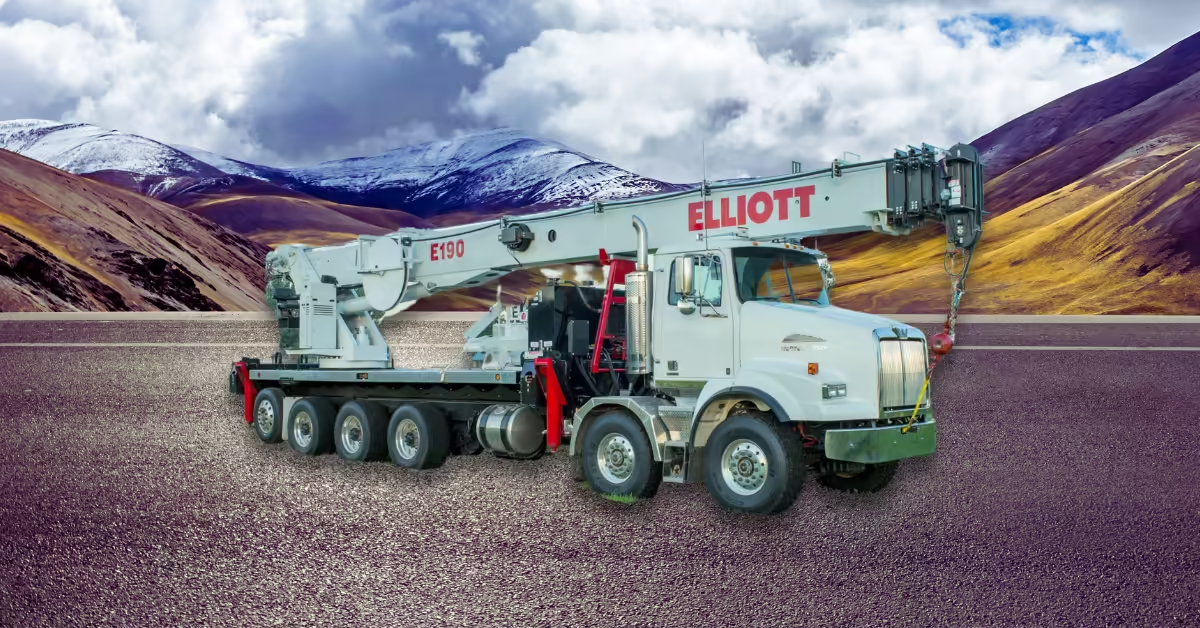Boom trucks have become an indispensable tool in many industries, especially those that require lifting, transporting, and positioning heavy loads. From construction to utilities and beyond, these versatile vehicles offer a practical solution for jobs that demand height and mobility. In this article, we’ll explore what a boom truck is, how it differs from crane trucks, and the various ways it can be used in your business. By the end, you’ll understand why boom trucks are a valuable asset that can save both time and money.
What is a Boom Truck?
A boom truck is a heavy-duty vehicle equipped with a hydraulic crane, known as a “boom,” mounted on its chassis. This boom can extend vertically and horizontally, making it perfect for lifting materials or workers to high locations. The boom can either be fixed or telescopic, depending on the truck model, and is typically used for tasks like utility line repairs, tree trimming, and construction work.
Boom trucks combine the functionality of a truck with the lifting capacity of a crane, offering a mobile solution that makes them incredibly versatile. With their built-in lifting mechanisms, they eliminate the need for separate trucks and cranes, saving businesses both time and money on job sites.
The Difference Between Boom Trucks and Crane Trucks
Although often confused, there are distinct differences between these vehicles and crane trucks, designed to meet different needs:
Design: A boom crane is mounted on a standard truck chassis, making it highly mobile and ideal for road travel. In contrast, a crane truck is a larger, heavier vehicle that usually offers more lifting power but is less mobile.
Mobility: These vehicles are perfect for quick jobs that require mobility between various sites, while crane trucks are better suited for larger, long-term projects where the vehicle remains in one location for extended periods.
Lifting Power: Crane trucks generally have a higher lifting capacity, making them ideal for extremely heavy loads in large construction projects. On the other hand, boom vehicles are lighter and more agile, designed for mid-range lifting tasks.
Both types of equipment serve specific purposes, but trucks with booms offer a combination of lifting power and mobility, making them highly efficient for a variety of jobs.ifting power and road mobility, making them highly efficient for a variety of jobs.
Popular Uses of Boom Trucks in Various Industries
Boom-equipped vehicles are widely used across different industries because of their versatility. Here are some of the most common applications:
- Utility Maintenance: These trucks lift workers to repair electrical or telecommunications lines. Their flexibility allows them to easily reach poles and other elevated structures.
- Construction: In the construction industry, they help lift materials like steel beams and concrete slabs to higher elevations. Their mobility also makes them perfect for moving between job sites.
- Tree Trimming: Tree service companies rely on these vehicles to safely lift workers for cutting branches from tall trees. Their ability to move easily makes them efficient for these tasks.
- Sign Installation and Maintenance: They are often used for installing and maintaining large commercial signs, reaching high locations while providing stability for precise placement. If you’re interested in other specialized trucks that can boost your business efficiency, don’t miss out on our guide to Reefer Trucks and their importance for business growth.
- Heavy Equipment Transportation: Some businesses use these trucks to load and transport heavy machinery or equipment that requires careful handling and positioning.
- Window Cleaning: In high-rise buildings, these trucks can lift workers for cleaning windows or performing exterior maintenance.
How to Choose the Best Vehicle for Your Business
Selecting the right equipment is crucial for your business’s efficiency and safety. Here are several factors to consider:
Lifting Capacity: One of the first things to evaluate is the vehicle’s lifting capacity. Choose a truck that can comfortably lift the maximum weight you expect to handle on the job site. For instance, some models can lift up to 45 tons and have a 127-foot reach, making them ideal for heavy-duty tasks.
Boom Reach: Depending on the height you need to reach, different models offer varying reach lengths. Telescopic cranes provide extended reach, while articulating models offer more maneuverability for tricky, confined areas.
Mobility: Consider how frequently you need to move between job sites. Vehicles with good road capabilities and fuel efficiency are essential if you need to transport the truck long distances or across multiple locations.
Customization: Some trucks can be equipped with specialized attachments such as buckets for lifting workers or platforms for carrying materials. Customization can greatly increase the truck’s utility, so assess what specific features would benefit your business.
Boom Truck Safety Guidelines
Safety is paramount when operating a boom truck. Here are some safety measures to follow:
- Pre-Operation Inspection: Always perform a thorough inspection of the boom truck before starting any job. Check for any mechanical issues, ensure the boom is working properly, and inspect tires and hydraulic systems.
- Stabilization: Most boom trucks are equipped with outriggers that provide additional stability. Always extend the outriggers fully and ensure the truck is on level ground before using the boom.
- Load Limits: Never exceed the boom truck’s load capacity. Overloading the boom can result in mechanical failure or accidents, which can be costly and dangerous.
- Proper Licensing: Ensure that all operators have the required certifications and training to handle a boom truck safely. In some regions, additional certifications may be required for specific uses.
Boom Truck Operator Requirements
Operating a boom truck requires specific qualifications:
- Licensing: Depending on the boom truck’s size and weight, operators may need a Commercial Driver’s License (CDL). Additionally, most states require certification from the National Commission for the Certification of Crane Operators (NCCCO) to operate a boom or crane.
- Training: Many companies require their operators to undergo specialized training to safely use the boom truck’s controls and lift heavy loads.
- Experience: While formal qualifications are essential, hands-on experience is invaluable for safely operating a boom truck. Ensure that operators have significant experience in handling both the truck and the boom.
Boom Truck Load Capacity and Efficiency
These vehicles come with different load capacities, typically ranging from 5 tons to 50 tons, depending on the model and size. Here’s how to determine the right load capacity for your business:
- Light-Duty Models: Ideal for smaller tasks like tree trimming or light construction work, with a capacity of up to 10 tons.
- Medium-Duty Models: Used for utility work, maintenance, and moderate construction jobs, handling loads between 10 and 30 tons.
- Heavy-Duty Models: Built for large construction or industrial tasks, these vehicles can lift up to 50 tons, making them suitable for transporting and lifting massive materials.
The truck’s efficiency will largely depend on its weight distribution, fuel economy, and proper use of its hydraulic systems.
Maintaining Your Boom Truck for Optimal Performance
Routine maintenance is key to ensuring your boom truck operates smoothly and efficiently. Here’s what you need to focus on:
- Hydraulic System Maintenance: Regularly check and service the hydraulic system to avoid leaks or pressure loss, which can affect the truck’s lifting capability.
- Boom and Cable Inspection: Inspect the boom and cables for wear and tear. Any signs of fraying or cracks should be addressed immediately to prevent accidents.
- Tire and Brake Checks: Boom trucks carry heavy loads, so tires and brakes can wear out faster than regular vehicles. Ensure both are checked regularly to prevent issues.
FAQs
1. What is the average cost of a boom truck?
The cost of a boom truck can vary widely based on its size, lifting capacity, and features. Typically, prices range from $30,000 to $200,000. Used models may offer cost savings but ensure they are in good working condition.
2. How often should I maintain my boom truck?
Routine maintenance should be performed regularly, ideally every 100 hours of operation or at least once a month. This includes inspecting hydraulic systems, boom integrity, tires, and brakes.
3. Can boom trucks operate in adverse weather conditions?
While boom trucks can operate in various weather conditions, safety protocols must be followed. High winds, rain, or icy conditions can pose risks, so operations should be suspended when conditions are unsafe.
4. Do boom trucks require special licensing?
Yes, operators typically need a Commercial Driver’s License (CDL) and certifications from organizations such as the National Commission for the Certification of Crane Operators (NCCCO). Training specific to boom truck operation is also essential.
5. What is the maximum lifting height of a boom truck?
Lifting height varies by model. Generally, boom trucks can reach heights of 30 to 100 feet. Telescopic boom trucks can extend further, providing increased versatility for different job sites.
Conclusion
In conclusion, boom trucks are invaluable tools that offer a blend of mobility, efficiency, and lifting power across various industries. Their versatility makes them suitable for tasks ranging from utility maintenance to construction, while their design allows for easy transportation between job sites.
By understanding the key differences between boom trucks and crane trucks, businesses can better assess their operational needs and make informed investments. Moreover, prioritizing safety through proper training and maintenance ensures that these machines operate at their peak performance.
As industries continue to evolve, the demand for reliable and efficient lifting solutions will grow. Investing in a boom truck not only enhances productivity but also prepares your business to tackle new challenges effectively. Whether you’re lifting heavy materials, conducting maintenance, or performing specialized tasks, a boom truck can be a critical asset in achieving your operational goals.
Emma Rose is a professional writer with over 3 years of experience covering a wide range of topics, including health, lifestyle, and technology. She is known for her in-depth research and commitment to providing accurate, trustworthy, and engaging content. Emma’s work focuses on delivering value to readers by simplifying complex topics and ensuring every article meets high editorial standards.




